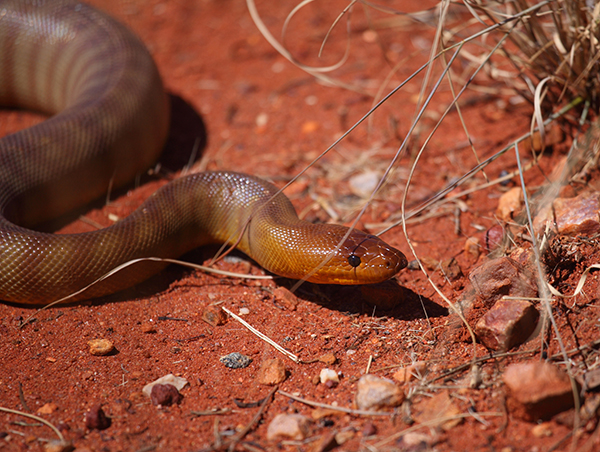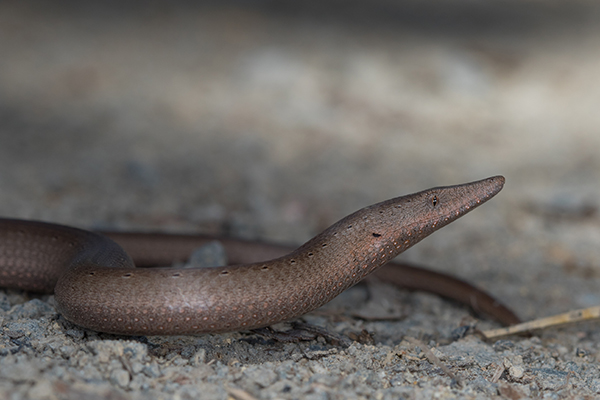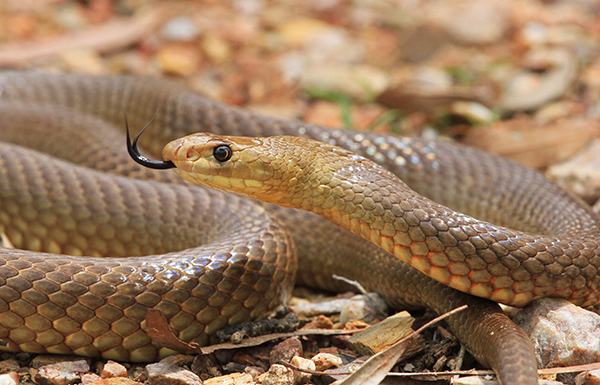With the days getting longer and warmer, snakes are on the move and it is important to look out for your safety, but most of the time when we see these guys they are just catching some rays or passing through.
Many snakes actually lead a very quiet life over winter and settle down somewhere, only emerging occasionally to feed. Over the first warm days of spring though, they start becoming more active again and are commonly seen warming up in the sun or out and about on the search for mates and summer feeding grounds.
A diverse range of more than 25 snake species inhabit the Wheatbelt and while technically more than half of those are venomous, only eight species in the region are considered to be dangerous to humans. The remaining 17 or so are either non-venomous or likely to only cause local swelling and discomfort. The Wheatbelt is also home to nearly a dozen legless lizards which are commonly mistaken for snakes.

Woma – a non-venomous member of the Python family which is specially protected and occurs throughout the northern Wheatbelt
As an important part of the ecosystem, snakes are great at cleaning up pests like rats, mice and rabbits, and in turn provide food for raptors, goannas and other animals. They typically feed on small mammals, birds, rodents, frogs, skinks and insects. Some even live underground and eat termites and ant larvae. Pythons (non-venomous) often inhabit roof spaces and sheds and can be a great snake to have around as they clean up mice and other vermin. Other more dangerous snakes like Dugites, Gwardars and King Brown (Mulga) snakes will also be attracted to areas where prey occur, such as rock or wood piles, sheds and loose stacked metal sheeting. Tiger snakes will often be drawn to ponds and shade houses too as they search for frogs.

Burton’s Legless Lizard – a harmless lizard often mistaken for a snake, which is widespread and seen in a range of colours
As a result, snakes are often in the vicinity of humans, pets and livestock, but they will typically avoid conflict when they can, and as long as they have an escape route will generally leave anything larger than themselves alone. Most bites occur when people try to kill or capture a snake, or the snake is cornered or trodden on, so the best tactic is to give any snake a wide berth and allow it to move on. Several products are available which can be used to deter snakes from around your house, shed or other key areas, including spray mixtures and solar-powered garden spikes which emit pulsing vibrations through the ground around them. Keeping grass short, removing any rubbish piles or building material and keeping chook pens and bird cages clean and free of excess grain that would attract rodents is also helpful in reducing the risk of snakes around your home.

Gwardar (Western Brown Snake) – a potentially lethal venomous snake which is known from across much of the Wheatbelt
Although we have many venomous snakes in Western Australia and some are lethally dangerous, there are also many snakes that are harmless, but identifying which is which is difficult as they can look remarkably similar. If you have a snake trapped in your house or garden it is best not to try and remove it yourself. There are a number of specially trained volunteer snake removers you can get in touch with through the Wildcare Helpline on (08) 9474 9055.
For pets or working animals that appear unwell after spending time in the bush or near risk areas, or that have been seen interacting with a snake, veterinary attention should be sought straight away. If you or another person has been bitten by a snake (or may have been) it is important to stay calm and still, apply pressure and a firm bandage to the area, and call for immediate medical assistance. You can find out more about snakebite symptoms and first aid in the factsheet from St John Ambulance.
Resources
Dealing with snakes (DAFWA)
Keeping safe from snakes (ABC Radio)
Snakes on the move (DPaW)
Living with reptiles (West Australian Reptile Park)
Wildcare Helpline on (08) 9474 9055
Wilson, S. K. & Swan, G. (2013), A complete guide to reptiles of Australia, Chatswood, N.S.W, New Holland Publishers


